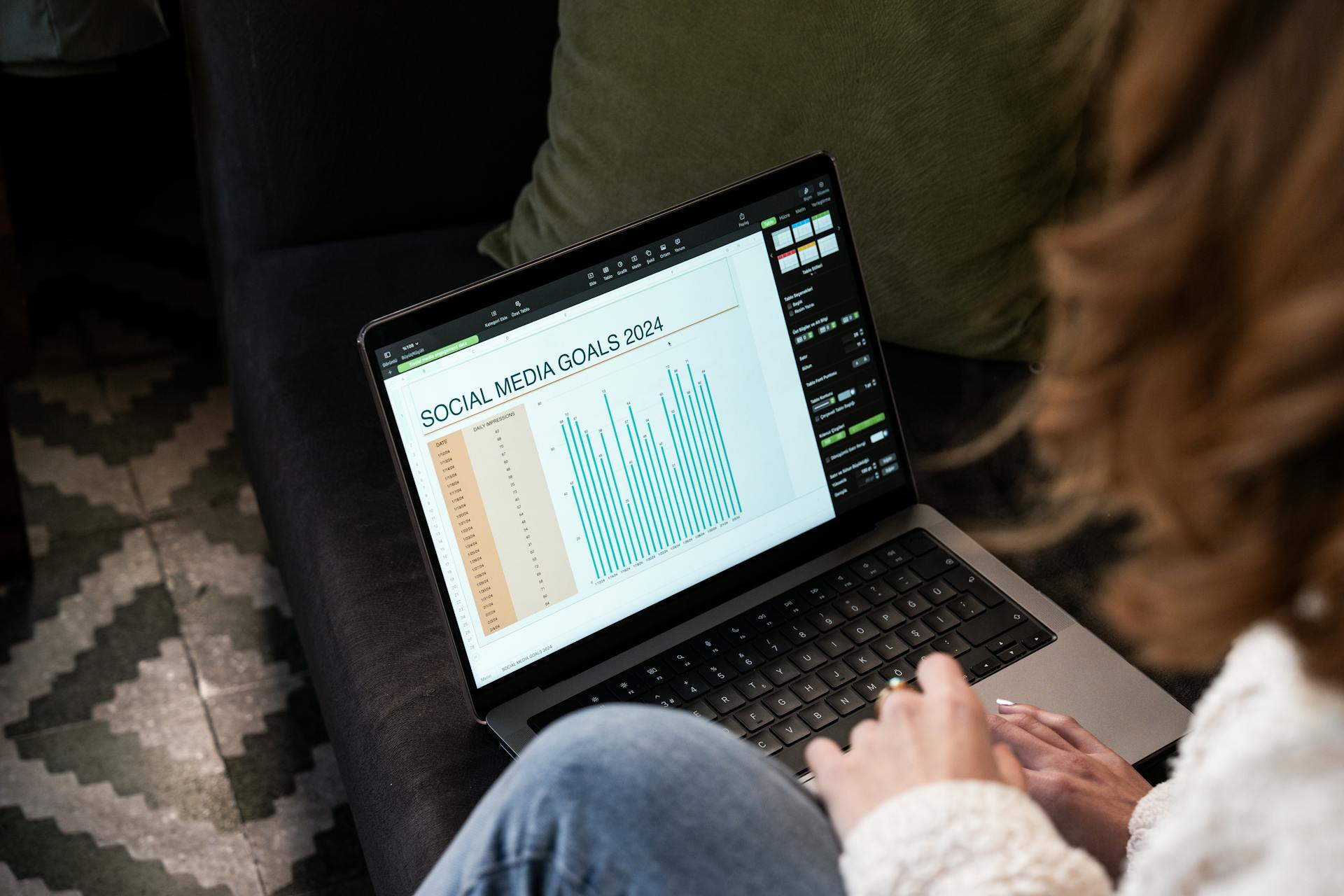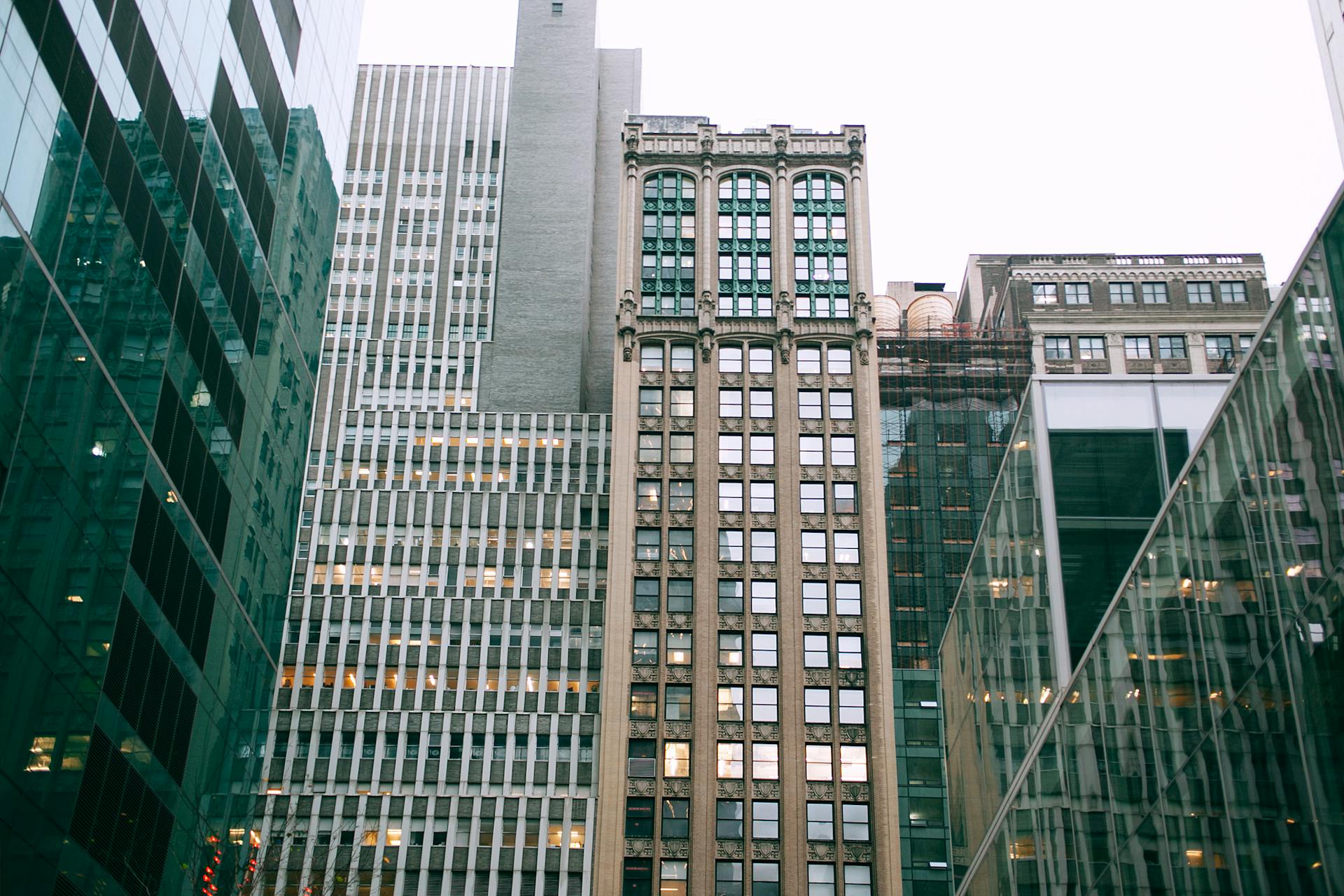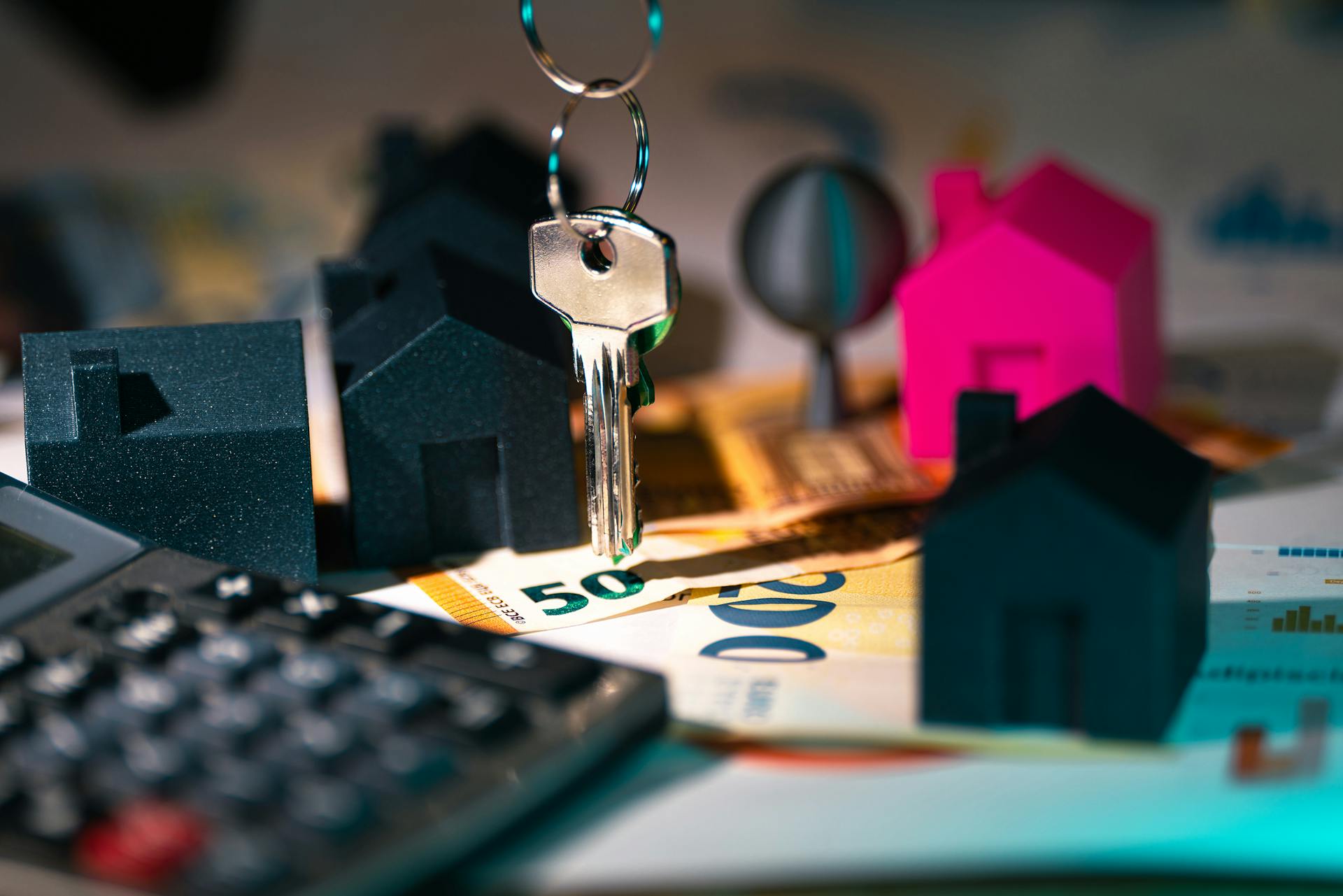
Commercial property insurance rates can be a significant expense for businesses. On average, commercial property insurance rates per $100 can range from $0.50 to $5.00 or more, depending on various factors.
Businesses in high-risk areas, such as coastal regions, may face higher rates due to increased exposure to natural disasters. For example, a property in a flood-prone area may have a rate of $2.50 per $100.
The type of property also plays a role in determining rates. Office buildings and retail spaces tend to have lower rates compared to warehouses and manufacturing facilities. A commercial property insurance rate for an office building might be around $1.00 per $100.
Insurance companies also consider the business's claims history and credit score when determining rates. A business with a good claims history and strong credit score may qualify for lower rates.
Curious to learn more? Check out: Business Property and Liability Insurance
How Commercial Property Insurance Is Calculated
Calculating commercial property insurance rates per $100 involves understanding the property value, which is assessed in three main ways: Total Insurable Value (TIV), Replacement Cost (RC), and Actual Cash Value (ACV).

Total Insurable Value is the sum of all assets covered under the insurance policy, including buildings, equipment, inventory, and business income values.
A detailed inventory of all physical and sometimes non-physical assets is key to determining the Total Insurable Value. This ensures the insurer knows the maximum amount they'll pay out in case of a total loss.
Replacement Cost policies cover the cost to repair or replace property using materials of the same or comparable quality, without accounting for depreciation.
For example, if a cafe owner has a replacement cost policy and loses a TV that cost $1,000 four years ago, the insurance will cover the cost to buy a similar new TV today.
Actual Cash Value policies, on the other hand, account for depreciation, meaning the owner would receive a portion of the TV's original value if it had depreciated by 40% over four years.
Business income is a crucial factor in premium calculation, as it can significantly impact the premium. Insurers consider various factors, including Replacement Cost vs. Actual Cash Value, Risk Exposure, and Protection Measures.
If this caught your attention, see: Property Insurance for Small Business

Here's a breakdown of how these factors affect premiums:
- Replacement cost policies generally have higher premiums because they cover the full cost to replace items.
- High-risk areas or businesses with higher exposure to natural disasters or crime will have higher premiums.
- Businesses with better protection measures, like fire sprinklers and security systems, can benefit from lower premiums.
By understanding these factors, businesses can better navigate the commercial property insurance landscape and make informed decisions about their coverage and premium rates.
Calculating Premiums
Calculating premiums for commercial property insurance is a crucial step in determining your rate per $100. Insurers consider several factors, including replacement cost vs. actual cash value.
Replacement cost policies generally have higher premiums because they cover the full cost to replace items. This means if your business has a lot of valuable equipment, you'll likely pay more for insurance.
Risk exposure is another key factor. High-risk areas or businesses with higher exposure to natural disasters or crime will have higher premiums. For example, a business located in a flood-prone area may pay more for insurance than one in a safer location.
Businesses with better protection measures, like fire sprinklers and security systems, can benefit from lower premiums. These measures can help reduce the risk of damage or loss.
Here are some common factors that can affect your premium rate per $100:
Commercial Property Insurance Components

Commercial property insurance rates are influenced by several key components. The value of the building and its contents is a significant factor, as it determines the potential cost of repairs or replacement.
Property location also plays a crucial role, with proximity to fire stations and susceptibility to natural disasters affecting the risk level. Construction quality is another important factor, with the materials used and condition of the building impacting the premium.
The type of business and activities conducted, known as occupancy, can also impact the insurance rate. This is because certain businesses may be more prone to specific risks, such as theft or accidents.
Understanding Property Value
Understanding property value is crucial when calculating commercial property insurance premiums. Total Insurable Value (TIV) is the sum of all assets covered under the insurance policy, including buildings, equipment, inventory, and business income values.
This value is used to determine the maximum amount the insurer will pay out in case of a total loss. Calculating TIV involves a detailed inventory of all physical and sometimes non-physical assets.

There are three main ways to assess property value: Total Insurable Value (TIV), Replacement Cost (RC), and Actual Cash Value (ACV).
Total Insurable Value is the most comprehensive method, taking into account all assets, while Replacement Cost and Actual Cash Value only focus on the cost to repair or replace property, respectively.
Here's a comparison of the three methods:
For example, if a cafe owner has a TV that cost $1,000 four years ago, a Replacement Cost policy would cover the cost to buy a similar new TV today, while an Actual Cash Value policy would cover the remaining 60% of its value, or $600.
Recommended read: What Does Personal Property Insurance Cover
Commercial Property Insurance Components
Commercial property insurance is a vital investment for any business owner, and understanding its components is key to making informed decisions.
The value of the building and its contents is a significant factor in determining commercial property insurance rates. The higher the property value, the higher the insurance premium.

Location plays a crucial role in commercial property insurance, with proximity to fire stations and susceptibility to natural disasters affecting premiums.
Construction quality is also a key factor, with properties built with high-quality materials and in good condition typically receiving lower premiums.
The type of business and activities conducted on the property, also known as occupancy, can impact insurance rates.
Protective measures such as fire alarms, sprinklers, and security systems can help reduce insurance premiums.
Here are the key factors that influence commercial property insurance rates:
- Property Value: The value of the building and its contents.
- Location: Proximity to fire stations and susceptibility to natural disasters.
- Construction Quality: Materials used and condition of the building.
- Occupancy: Type of business and activities conducted.
- Protective Measures: Presence of fire alarms, sprinklers, and security systems.
Mastering Commercial Property Insurance Math
Calculating commercial property insurance rate per $100 involves considering multiple factors, including property value, location, construction quality, occupancy, and protective measures. Property value is a crucial factor, and it's assessed in three main ways: Total Insurable Value (TIV), Replacement Cost (RC), and Actual Cash Value (ACV).
Total Insurable Value (TIV) is the sum of all assets covered under the insurance policy, including buildings, equipment, inventory, and business income values.
A fresh viewpoint: Insurable Interest in Property
To determine TIV, you need to conduct a detailed inventory of all physical and sometimes non-physical assets. This is key to calculating property insurance rate per $100.
Replacement Cost policies cover the cost to repair or replace property using materials of the same or comparable quality, without considering depreciation. Actual Cash Value policies, on the other hand, account for depreciation.
Here are the three main ways to assess property value:
Insurers also consider Replacement Cost vs. Actual Cash Value, risk exposure, and protection measures when calculating premiums. Businesses with better protection measures, like fire sprinklers and security systems, can benefit from lower premiums.
Sources
- https://www.alignedinsurance.com/total-insurable-value/
- https://griffitheharris.com/how-is-commercial-property-insurance-calculated/
- https://www.alignedinsurance.com/total-insurable-values/
- https://www.investopedia.com/terms/t/total-insurable-value.asp
- https://www.insurancebusinessmag.com/us/news/property/why-are-commercial-real-estate-rates-seeing-yearoveryear-increases-460037.aspx
Featured Images: pexels.com


